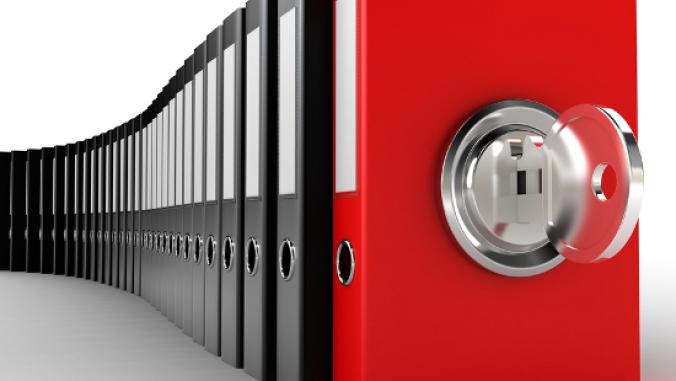How companies can navigate through the eco-label maze
<p>With more than 400 labels on the market, it's tough to make it sense of it all. Use these tips to find your way. </p>

Don’t judge a product by its green label -- at least for now.
With more than 400 eco-labels out there, it’s becoming more and more difficult for consumers to trust the sustainability claims made by a manufacturer. A lack of third-party certification, dishonest manufacturers and limited tools to assess a product’s environmental impact are just some of the challenges facing the eco-label market today. The issue is of particular concern to the architecture and design (A&D) community, whose decisions to use a particular product can have long-term consequences.
“There’s a lot of green noise,” said Paul Bates, training and education program manager at UL LLC, a product safety and certification organization, during a recent GreenBiz webcast about the challenges of eco-labeling. “The A & D community is running up against a lot of claims that are not certified or validated.”
The need for a third party to independently assess the validity of a company’s claims is becoming increasingly important, he said.
A database that helps companies find the right products to meet their requirements would be helpful, said Kirsten Ritchie, principal and director of sustainable designer at Gensler, a design and architecture firm, during the webcast. Currently, her firm has to rely on internet searches to verify product claims. But wading through hundreds of different eco-labels is a time-consuming process, she said.
“We don’t have a lot of time to do it,” she said. “This takes too long, it’s too disparate, we need some cohesion in this information.”
For Jane Rohde, principal at JSR Associates, the key is finding a way to compare product information using the same set of criteria. Rohde said a useful tool is CSI Greenformat, a directory that stores information about products and manufacturing in one location. The directory, developed by the Construction Specification Institute, allows firms and consumers to compare various products using the same format.
Sometimes manufacturers can be of help, Rohde said. If a firm has a good relationship with a manufacturer, it can be relatively easy to verify a product’s claims. But manufacturers’ knowledge about their own products varies.
“A lot are very well-versed with what is going on with their products,” said Rohde. “But then I find other manufacturers don’t have a clue.”
This needs to shift, said Ritchie, especially regarding the health and chemical concerns of their products.
“There needs to be a sea change,” she said. “There are a lot of manufacturers that need to learn a whole more about their products from an environmental perspective.”
Photo of maze provided via Laszlo Halasi/Shutterstock
A serious challenge facing consumers is the issue of greenwashing – when a company makes a misleading claim about the environmentally friendly nature of its products.
“There’s a ton of greenwashing out there, it’s a really big problem,” Mara Baum, healthcare sustainable design leader at HOK, an architecture firm, said during the webcast.
For example, some manufacturers claim that their products can earn a firm a certain number of Leadership in Energy and Environmental Design (LEED) points. But LEED is structured in such a way that a single product cannot earn any points, said Baum. It would be more accurate – and helpful – for a manufacturer to state that a product can contribute to, say, 12 LEED points, for instance, and state the specific scenarios in which this could happen and why. Soon, consumers will be able to differentiate between educated manufacturers and lazy manufacturers by the way they explain their LEED characteristics, said Baum.
Another common misleading claim is when a manufacturer labels a product as “natural,” said Ritchie. Natural does not mean that it is necessarily good for the environment or beneficial to peoples’ health, she said.
“[Tree frogs] are natural but they are highly poisonous and dangerous,” she said.
Foreign manufacturers are especially prone to greenwashing, said Ritchie. Many of these manufacturers are relatively new, and are therefore not as educated and experienced around sustainability as their U.S. counterparts. A global verification system would go some way to solving the issue, she said.
“Consistency around the globe is needed,” Ritchie said.
Rohde said manufacturers should focus on the scientific facts instead of throwing around buzzwords and catchphrases that prey on consumers’ emotions. A&D firms would rather a company be upfront about what’s in their products, she said.
“I think some companies are really honest, and when they are, we really value that,” she said.
But the issue is improving, said the panelists, thanks in large part to consumers. Consumer awareness has grown, and oftentimes it’s the consumers who question and uncover false claims.
“People are smarter,” she said. “We are seeing a more intelligent and aware vocal consumer community.”
The A&D community has also gotten wiser, said Rohde, which in turn has put pressure on manufacturers to become more educated about their products.
“If you ask a hard question, you want to have the correct, accurate information provided,” Rohde said.
An environmental product declaration (EPD) label is one of the most common labels out there. It means the product has been subject to a life cycle analysis (LCA), a tool widely used by manufacturers to determine the environmental impact of a product, throughout its entire lifecycle. Panelists agree that while LCA is good for determining the carbon footprint of a product, it falls short in other areas, such as health issues and responsible sourcing. More tools and resources are needed that look at the many different environmental impacts of a product, said Baum.
“An EPD in its ideal form really would include more than what an LCA is currently able to offer,” she said.
An informal group of designers, researchers and academics are coming together to create standards that will provide more consistency, making it a little easier for designers to understand what the labels mean, Baum said.
“We’re hoping there’ll be more resources available, to help designers ascertain differences,” she said.
A huge concern for manufacturers is the high cost of conducting an LCA. Many see the tool as the latest in a barrage of demands from the sustainable design community, said the panelists. But manufacturers need to look at it from a different perspective, Rohde said. Rather than see it as just another marketing expense, companies need to view it as a way to fully understand their own products.
“I think it’s about being smart on your products,” said Rohde. “It’s the right thing to be doing.”
A dialogue between manufacturers and designers is also necessary, said Ritchie. Manufacturers might make what they think is a small change to their product, but what could have serious environmental implications.
“There needs to be an understanding on both sides that those changes actually make a big difference,” said Ritchie.
Rohde suggests bringing in key manufacturers ahead of time. This gives designers the chance to explain what it is they hope to achieve and their sustainability goals.
It’s about “working with an integrated team before getting to that point where you have a critical issue,” she said.
Tips for manufacturers:
- Aim for transparency. Often, companies are reticent to be completely open about what’s in their products. They're afraid that by doing so, they’re giving away valuable trade secrets. But as demand for transparency grows, companies that embrace it will be viewed as more credible. “It’s not something to be afraid of,” said Rohde.
- Understand the market you’re selling into. If you’re selling into a commercial office, for instance, you need to know how your product stacks up against various building standard systems, like LEED. It’s a win-win for both sides, said Ritchie. “It helps the manufacturer understand what the design community is going to ask of them,” she said. “And it makes [the designers’] lives so much easier.” Manufacturers need to educate their entire distribution chain, so the sales representatives and distributors are able to answer any questions designers might have. Products are constantly being changed and updated, said Ritchie, so an ongoing training and education program is needed.
- Find alternative solutions and markets. “There are some types of products that have health and environmental issues that means they should not be on the market long-term,” said Baum. Some manufacturers have realized this and shifted their focus to other products or markets, she said, while others have remained fixated on unsustainable products and lied to consumers to maintain their market share. “I’d rather buy PVC flooring from a manufacturer that realizes that PVC can’t be part of our material ecosystem long-term,” she said.
Ultimately, eco-labels that have been independently assessed will win out in the end.
“At the end of the day, it’s clear eco-labels that have verifiable and credible underpinnings based on third party standards are the ones that are going to be able to succeed in the marketplace,” said Joel Makower, chairman of GreenBiz Group, during the webcast.





